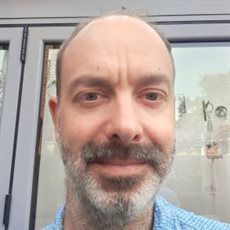Professor Andy Lovering
Supervisor Details
Research Interests
We take on a variety of projects, but typical areas include:
- Invasion – how are prey cells recognized, and how do predators breach the outer membrane? This is a multifactorial process – no genetic resistance to predation has ever been observed (in contrast to bacteriophages and their receptors, which are subject to a relatively rapid development of resistance).
- Protection – what factors prevent Bdellovibrio from killing itself? We published the first such example of a predator self-immunity protein in 2015 (an interesting case of evolution shaping one protein to block two enzymes): Nature Commun. 2015 Dec 2;6:8884.
- Signalling – what are the stimuli that govern switching between the different lifecycle stages (swim > recognition > adhere > enter > metabolize > divide > exit)? Some of these pathways utilize the second messenger cyclic-di-GMP (common to many bacteria, but used herein to regulate predation).
- Metabolism – predators are very distinct, often losing pathways for amino acid and vitamin biosynthesis, but encoding a massive array of novel proteases, lipases, nucleases and transporters.
- Motility – prey density is high in biofilms; predators can exploit this by using a cryptic form of motility (“smooth gliding” – that pushes the cell over surfaces, utilizing a motor that runs on a helical thread around the cell periphery).
Research Groups
MIBTP Project Details
Co-supervisor on projects with: Professor David Grainger, Dr Aneika Leney, Dr Graeme Kettles
